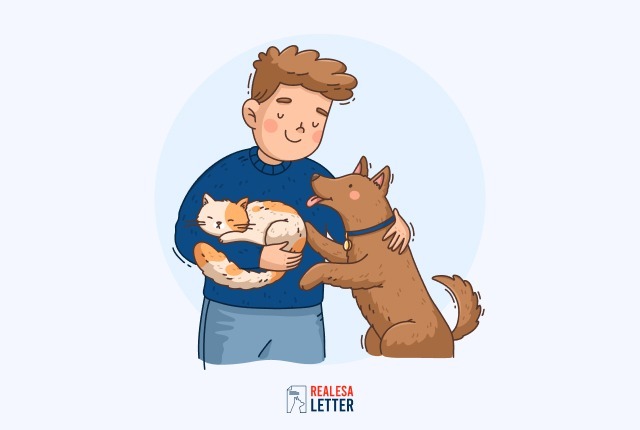You’re taking your ESA into housing or public spaces and keep running into questions, stares, or confusion. Without clear identification, you may face pushback, stressful for you and your companion dog.
What is an Emotional Support Dog Vest
An emotional support dog vest is a piece of dog clothing designed to signal that your dog is part of disability-related support. It is distinct from service animals that are trained to perform a specific task.
A vest does not make a dog a service animal, nor is there such a thing as a government-issued “official emotional support dog vest.” In practice, a vest offers visibility (“working dogs” on duty), helps others understand boundaries, and often includes patches like “Do Not Pet.”
Under federal law, it’s identification, not a credential.
Is Wearing a Vest Necessary for an Emotional Support Animal (ESA)
Under the current and updated U.S. emotional support animal laws, a vest is not a legal requirement for assistance animals (including ESAs) in housing or for service animals in public places, but it’s often highly recommended.
The ADA does not require service dogs to wear a vest or ID, and HUD’s Fair Housing Act guidance focuses on need and documentation, not equipment. Airlines may treat ESAs as pets since 2021.
Here's why vests are often recommended:
- Identification & Awareness: A clearly labeled, brightly colored vest sets expectations in crowded spaces, reducing interruptions and accidental petting. It also communicates “on duty” to staff who may not understand the difference between service animals and ESAs. (Legally, service animals are dogs trained to perform tasks; ESAs provide emotional support and are treated differently under ADA.)
- Preventing Confusion: Because there’s no federal “official” registry or required ID, a vest helps avoid mix-ups with pets while you present appropriate documentation when needed (e.g., in housing).
- Reducing Pushback: Clear visual cues + calm communication often minimize challenges from gatekeepers. In housing, providers evaluate reasonable-accommodation requests primarily via reliable documentation from a licensed health care professional, not a vest.
How to Measure Your Emotional Support Dog for the Ideal Vest Fit
A good fit matters for comfort and control. Focus on chest girth (the most important measurement), plus neck circumference and back length. If your dog is between sizes, most brands recommend sizing up.
Step#1: Measure Chest Girth
Wrap a flexible tape around the widest part of the chest, just behind the front legs, while your dog stands naturally. This drives the size you pick.
Step#2: Measure Neck
Measure low on the neck (between the withers and the collar line). Make sure you can slip two fingers under the tape for comfort.
Step#3: Measure Back Length
Measure from the base of the neck to where the tail begins. This helps ensure the vest’s body panel doesn’t feel tight or ride up.
Step#4: Check Brand Charts
Confirm your measurements against the brand’s size guide. “Small” in one brand may be “XS” in another. If on the line, choose the larger size and adjust the straps.
Step#5: Test Movement
Have your dog walk, sit, and lie down. The vest should stay secure without pinching, shifting, or restricting movement. Swap out if you notice rubbing points after a short walk.
Different Vest Sizes for an Emotional Support Dog
Sizing varies for each particular brand. The ranges below are typical neck or girth guidance used by makers of harnesses and vests. Always prioritize chest girth and your brand’s size chart. Breed examples are for reference only.
XXS Emotional Support Dog Vest (6–9 inches)
Best for toy breeds and very young puppies. Often used for ESA vests for small dogs who need ultra-light gear.
Best Suited For: Chihuahua, Teacup Pomeranian, Yorkshire Terrier Puppy.
XS Emotional Support Dog Vest (10–13 inches)
For tiny pups with delicate necks. Look for soft edging to prevent painful rubbing and blisters.
Best Suited For: Maltese, Papillon, Brussels Griffon.
Small Emotional Support Dog Vest (14–18 inches)
A popular class for compact companions who still require visibility without bulk.
Best Suited For: Miniature Poodle, Pug, Dachshund, Havanese.
Medium Emotional Support Dog Vest (19–23 inches)
Aim for adjustable chest panels and breathable materials.
Best Suited For: Cocker Spaniel, Beagle, French Bulldog, Corgi.
Large Emotional Support Dog Vest (23–27 inches)
Look for sturdier buckles and reinforced leash points. Great for ESA vests for large dogs that may guide or anchor during anxious moments.
Best Suited For: Pit Bull–type dogs, Boxer, Australian Shepherd, Siberian Husky.
XL Emotional Support Dog Vest (28–32 inches)
Consider padded chest plates and wider straps for even pressure distribution.
Best Suited For: Labrador Retriever, Golden Retriever, German Shepherd.
XXL Emotional Support Dog Vest (33–42 inches)
For very broad or giant breeds. Check weight ratings and heavy-duty hardware.
Best Suited For: Rottweiler, Bernese Mountain Dog, Great Dane, Mastiff.
Some brands size primarily by chest girth. Use your measurements to map to these bands and pick what fits best.
Fabric & Color Selection for ESA Vests
Your choice affects your buddy's comfort, durability, and visibility, so pick wisely!
Durable Nylon or Polyester (Everyday use)
These tough, water-resistant fabrics handle abrasion well and dry fast. Ideal for daily errands and light rain.
Breathable Mesh (Warm weather)
Mesh panels improve airflow and reduce heat buildup. Especially helpful for brachycephalic breeds or summer walks. Pair with lighter linings to prevent hot spots.
Padded or Neoprene-Lined (Sensitive skin)
Padding eases pressure over the sternum and shoulders and can help prevent cramps on longer outings.
Reflective Piping/Trim (Low light)
Reflective accents enhance visibility at dawn, dusk, or in rain. Consider using vividly colored shells to further stand out.
Multiple Color Choices
Brightly colored vests (red, orange, royal blue) are visible and read “professional,” similar to service dog vests used for working dogs. Dark neutrals look sleek but can be harder for staff to spot in busy environments.
Variety of Styles for Support Dog Vests
Different bodies, climates, and activities call for different builds.
Padded Style Vests
Extra chest and belly padding help distribute pressure evenly. Good for ESA vests for large dogs and for longer wear. Look for wide Velcro or dual buckles to prevent shifting during brisk walks.
Mesh Vests
Ultralight and breathable for hot climates or short outings. Ideal for ESA vests for small dogs that can overheat under bulky gear. Ensure the mesh is sturdy enough not to tear at leash points.
Backpack Vests
Small side pouches can carry waste bags or a folded copy of your documentation. Keep loads minimal (generally under 10–15% of body weight) so the vest remains stable and comfortable.
Light-Weight Cotton Vests
Soft and comfortable for dogs with sensitive skin. Better for mild weather and indoor settings. Confirm that the cotton shell has structural reinforcement at leash attachments.
What Else is Required Besides the Vest
A vest alone does not imply legal status. What matters is clear documentation and the need for an ESA. Individuals with disabilities may request permission to keep an ESA as a reasonable accommodation.
Housing providers can ask for reliable documentation from a licensed mental health care professional showing that you have a disability and a disability-related need for the animal. If your paperwork is more than a year old, keeping it updated by renewing your ESA letter can help avoid unforeseen issues since many landlords prefer recent documentation.
If you’re unsure what legitimate documentation looks like, check out this sample ESA letter. Also, review HUD’s guidance on what health-care professionals may include:
- provider-patient relationship,
- confirmation of disability,
- animal type,
- and professional licensing/contact information.
That’s essentially what a compliant ESA letter should reflect, issued by a licensed professional with personal knowledge of you.
A quick note about “official or free emotional support dog vest”. There is no government-recognized, official emotional support dog vest, and vests/registries do not replace documentation. Be cautious with “free” offers that imply legal status. What matters is your legitimate need and the letter from a licensed clinician.
To Sum Up,
The best emotional support dog vest is one that fits your dog’s body, keeps them comfortable, and clearly communicates their role, without pretending to be a credential. Measure chest girth, neck, and back length precisely. Also, select a fabric and style for your climate and usage, and pick colors that enhance visibility.
Remember, while service animals must be trained to perform a specific task, ESAs support mental health needs and are evaluated differently under the FHA. Vests help with clarity, but your legitimate documentation carries the legal weight in housing and airline travel.
Ready to make life easier for you and your dog? Get a verified, clinician-issued ESA letter you can confidently present. Try RealESALetter.com once and feel the difference.
Pricing
PSD Letter
Reviews
ESA By States
ESA Laws
Resources




